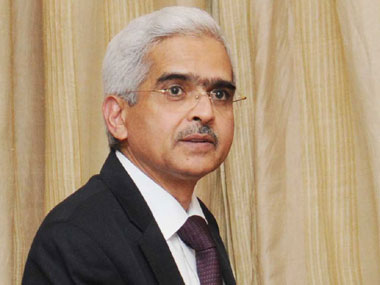The government doesn’t plan to introduce new Rs 1,000 notes and the focus now is on production and supply of Rs 500 and lower denomination notes, said Economic Affairs Secretary Shaktikanta Das in a tweet on Wednesday.
No plans to introduce ₹1000 notes. Focus is on production and supply of ₹500 and lower denomination notes.
— Shaktikanta Das (@DasShaktikanta) February 22, 2017
It is not clear whether Das meant to say that Rs 1,000 notes will not come for the time being (there were speculations in the media in recent days on this) or the government has shelved the plan forever.
If it is the latter, Das has taken a major U-turn from his own earlier statement made shortly after Prime Minister Narendra Modi announced the demonetisation of Rs 500 and Rs 1,000 notes on the midnight of 8 November. “In a few months, new colour combination and new design Rs 1,000 notes will be released," Das had then said .
Following this, there were speculations in the media about the birth of the new avatar of Rs 1,000 bills. Also, the purported image of the new Bill began circulating in the social media adding to confusion. This might be one reason that prompted the economic affairs secretary to tweet out the clarification contradicting his own earlier statement. Perhaps, there was indeed a plan for the new Rs 1,000 notes which the government had to cancel for some reason.
But, the bigger question is this.
If lower denomination notes (Rs 500 and below) are the focus, why did the government/ Reserve Bank of India flood the system with Rs 2,000 notes in the days that followed demonetisation when general public was reeling under severe cash crunch? The Rs 2,000 notes did little help to ease the misery of the common man and small traders, since there was no change available in the markets.
In a cash-dominated economy, it wasn’t hard to imagine for the government that lower denomination notes play a key role in majority transactions, while high value transactions are typically done in cheques. But, it chose to launch Rs 2,000 notes first and the Rs 500 bills came much later.
Instead of the Rs 2,000 notes, couldn’t the government have the Rs 500 notes come to the market much earlier? Or is it because the importance of lower denomination notes in easing the pain of the common man dawned on the authorities much late? Das’s explanation today (Wednesday) that the government wants to increase the production and supply of Rs 500 and lower denomination notes doesn’t add up to the government’s action of introducing Rs 2,000 notes. It shows that the government didn’t think through the process well.
The only possible reason why the government chose to primarily inject Rs 2,000 notes into the system is printing less number of units will enable it to show a bigger figure in value terms, as compared to lower denomination notes. This is particularly so given the painfully underequipped infrastructure in the four mints to replace 86 percent of scrapped currency in a short period. The hurried introduction of Rs 2,000 notes only helped the large-scale hoarders since it became easier for them to hoard the cash since the Rs 2,000 notes occupied less space, while the common man on the street still went around to search for the change.
With no Rs 1,000 notes in, the gap between lower denomination notes and the Rs 2,000 notes remain and the common man’s trouble will continue, unless, of course the government expects the poor and middle class to dramatically turn to cashless transactions even when there is no infrastructure, safety measures and customer-supporting laws in place.
The realisation that lower denomination notes is key to ease the cash crunch, though late, is good, but had the government thought through the plan well and introduced smaller denomination notes immediately after demonetisation, instead of the Rs 2,000 notes, much of the pain suffered by the common man could have been avoided.


)




)
)
)
)
)
)
)
)